It stinks, right?
Luckily, there are some things you can do to extend the shelf life of our content. In this post, we’re going to look at 10 essential techniques for making your content thrive beyond the initial publish-date promotion.
10 Techniques for Keeping Your Content Alive Longer
1) Brainstorm evergreen topics.
Evergreen content is content that stands the test of time. It either covers a topic that will be just as applicable five years from now or one that can be easily updated to stay relevant.So how can you determine what evergreen topics to create for your business? You can start by
analyzing topics that you have published in the past to see how well they have continued to attract traffic.
To do this, dive into your website's analytics. When you look at your last thirty days worth of traffic, identify which pieces of content not published recently are driving significant traffic. These are evergreen posts. You can use them as inspiration for coming up with additional evergreen content ideas for your business.
Here's a snapshot of the analytics for the When I Work blog to show you what this can look like:
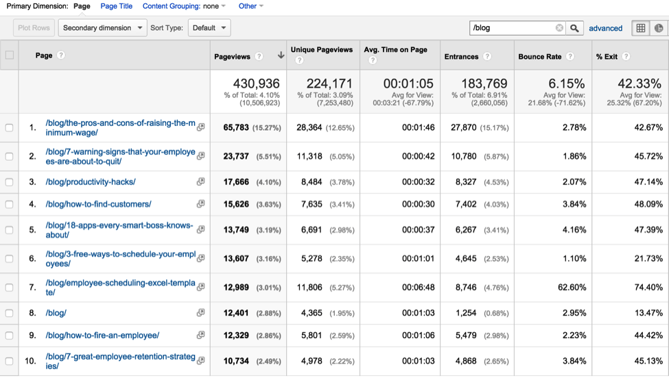
For those who do not have evergreen content just yet, there are some additional ways to get inspiration. The first is to use tools like Google Trends. Start by typing in a keyword or phrase that relates to your business. This tool will show you the trend in searches for that keyword or phrase.

If you see the graph going upward, you can be
confident that people are still interested in that topic, and therefore,
it can be a good base for your evergreen content. Next, you can take
that keyword or phrase and enter it in Google AdWords Keyword Planner to see related ideas that can be turned into content based on search volume.
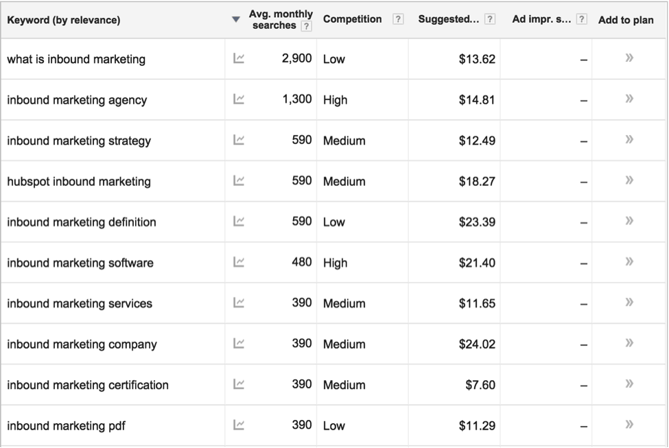
2) Research promotable content.
While organic search traffic will keep your evergreen piece of content alive, you still want to give it an initial and continued burst of traffic from promotion. There are several ways you can determine if your evergreen content ideas are going to promotion-worthy.For starters, you can take your primary keyword or phrase and enter it in Buzz Sumo to see the social popularity of content based on that topic.
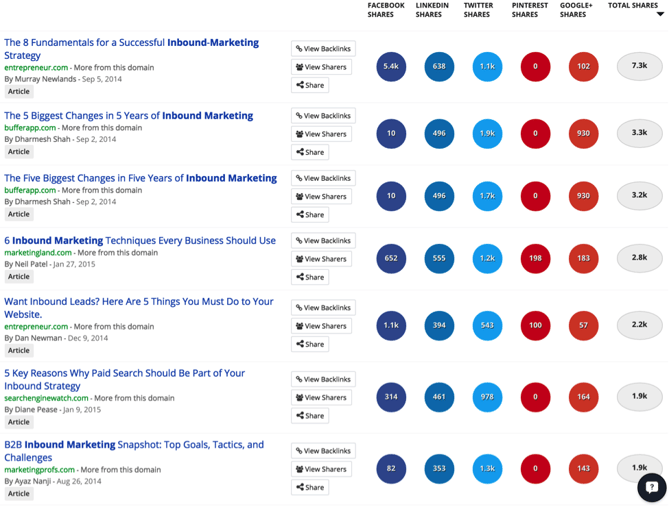
You should be able to look through the top pieces of
content to determine which ones would make for great evergreen content
inspiration with the confidence that a similar topic would be popular.
Next, you will want to look at the linkability of your
proposed evergreen topic idea. Do this by searching for content that
already ranks well in search results with your keyword or phrase. SEMrush allows you to search for a keyword or phrase and see the top pages ranking for it in organic search.
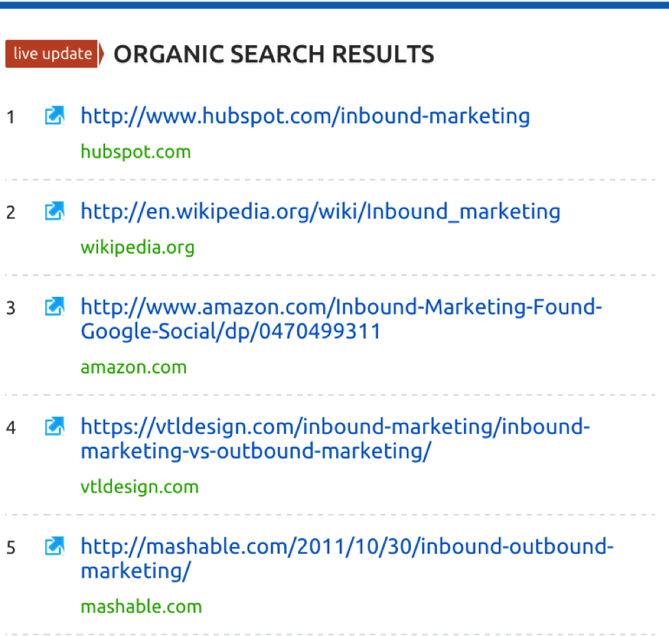
You can click links to older pieces of content related
to your keyword or phrase to see the backlinks for that piece of
content. Pro members of SEMrush can export this list and potentially
reach out to webmasters who have linked to an older article to let them
know about their newer, comprehensive piece of content.
Once you’ve taken social sharing and link
earning opportunities into account, you will want to look for direct
ways to promote your content. One way is through Q&A networks like Quora. You can search your keyword or phrase to find people who ask questions about the topic.
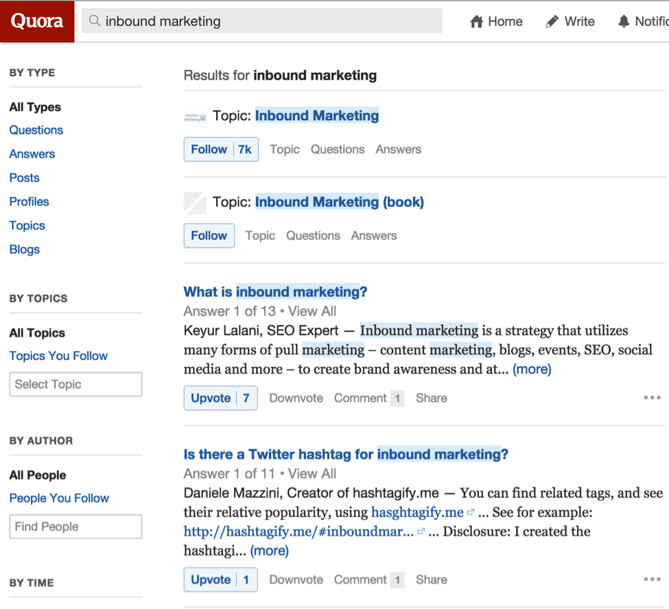
3) Enrich your content with mixed media, and optimize it for sharing.
As you are developing your evergreen content, you will want to include elements that make people want to share it -- and make it easy for them to do so. For starters, you can use tools like Canva to create images that people can use to share your post on social media.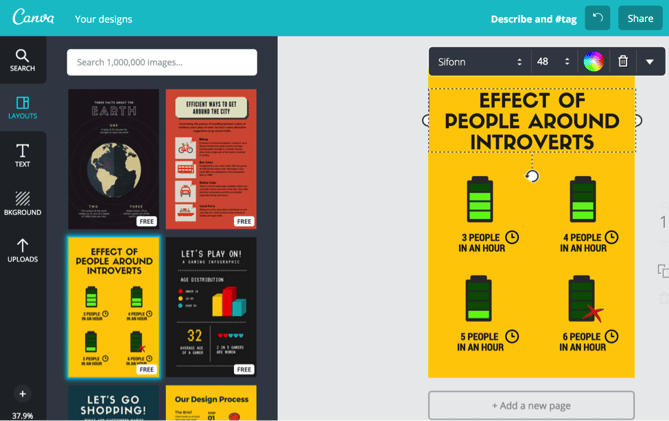
To further boost the value of your content, you can use Google Forms or HARO to collect quotes from industry experts or influencers about your topic. Then, you can implement tools like CoSchedule’s Click to Tweet to create beautiful tweet boxes that encourages readers to tweet those quotes.
You can also enhance your entire piece of content for optimal sharing with tools like Ivy by Filament. This tool allows readers to highlight any piece of content on the page and share it via Twitter, Facebook, or email.
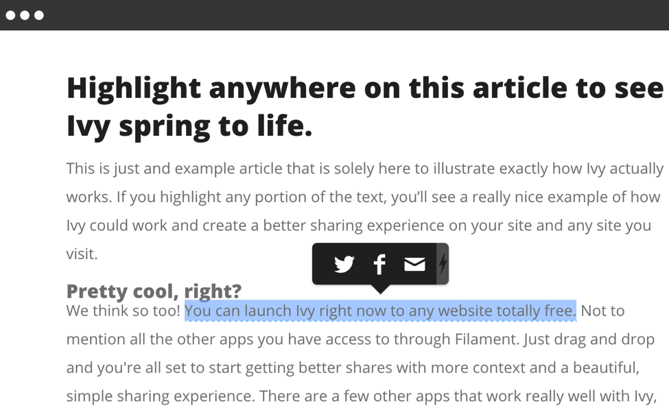
4) Plan your outreach strategy.
Beyond social media, search, and Q&A marketing, outreach is your best friend when it comes to making sure your content goes the distance. Best of all, you don’t have to blindly send out requests in hopes that someone will like your content. You can instead plan to reach out to the people you know will like your content.You can approach outreach in a couple of ways. First, you can use BuzzSumo as mentioned earlier to see the influencers who tweeted a related piece of content.
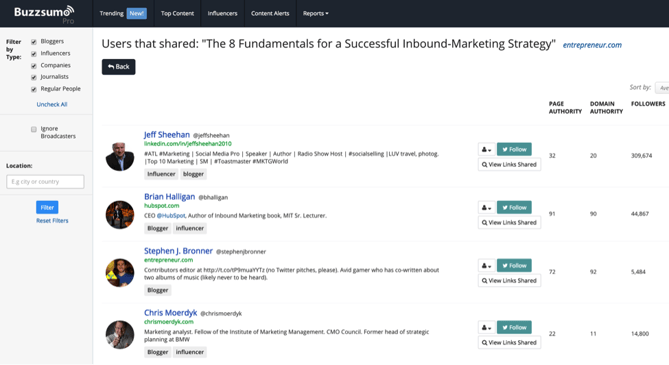
The only downside to this approach is that you only
get the user’s Twitter handle. This means that you will have to either
research the person to find additional contact information or only have
the ability to tweet them when you publish your content.
Alternatively, you can use pay for services like Content Marketer.io to
find the best recipients for your outreach efforts. It allows you to
enter a URL of a similar piece of content to see the Twitter handles and
email addresses of influencers likely to share your content.
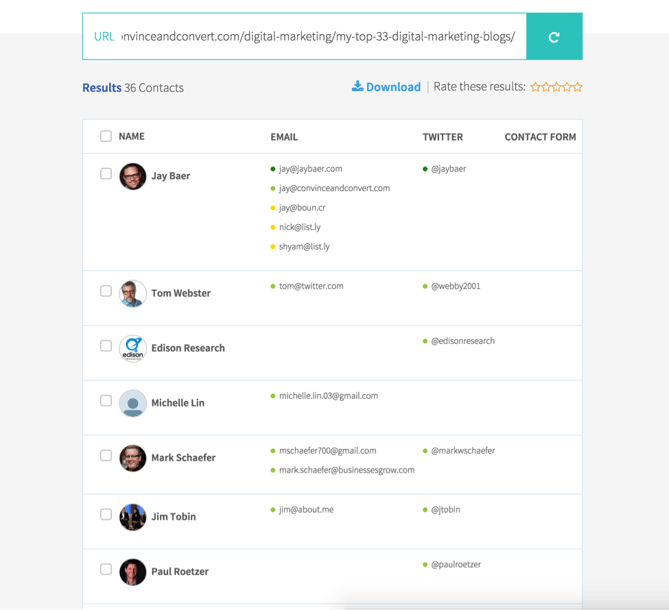
By researching your top outreach recipients ahead of publishing your content, you will have everything lined up to make sure that your content promotion goes off without a hitch.
5) Write your promotional-phase content.
At this stage, you are ready to craft your promotional content. First, you will want to write 25 additional headlines for your content. This is the strategy that Upworthy uses to create viral content headlines. The theory is that when you try to generate many headlines for your content, you will likely come up with a couple of valuable gems out of the rough. Those gems can be used to A/B test the content headlines for email and social media updates.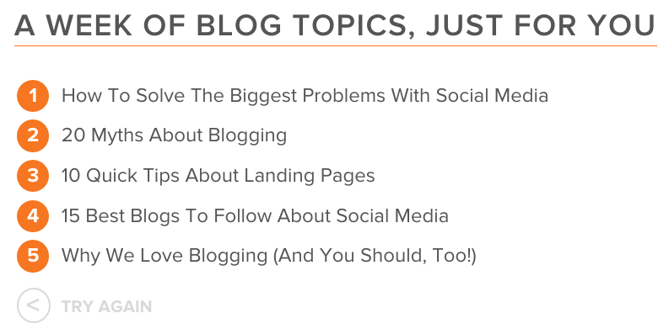
After your headlines and social media updates, you will be ready to write your outreach emails for all of the influencers you found in step #4. Your outreach emails should consist of three stages: the initial outreach, the follow up if you don’t hear from the influencer (which you can track with tools like Sidekick), and the thank you for when the influencer shares your content.
6) Know when to publish and promote.
Timing is everything when it comes to the initial promotional period. Though there are many studies out there that tell you when the best time of day is to publish and promote your content, you need to figure out what works best for your business.
First, you should look in your analytics to see the
best day is to publish your blog content. If you're a HubSpot customer,
you can export data from your Sources Report to determine which day is
best for traffic. If you use Google analytics, you can set up a custom report to figure this out, too.

Your Facebook Page Insights can help you find the best time to share your post on Facebook based on when your fans are online.
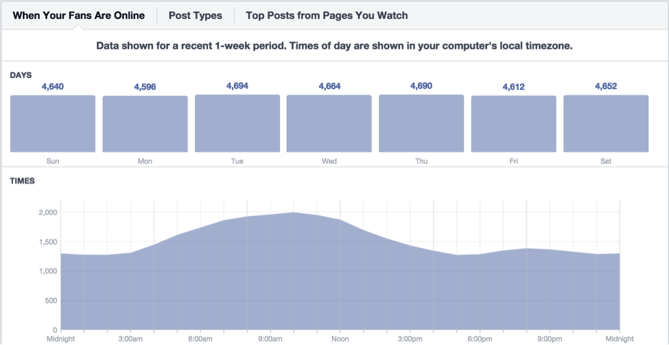
SocialBro
allows you to see when your followers are online as well as when you
can receive the most exposure for your tweets by day and by time.

You can also export your email analytics and sort the
columns to determine the best days and times to send emails to your
subscribers for the highest open and clickthrough rates.
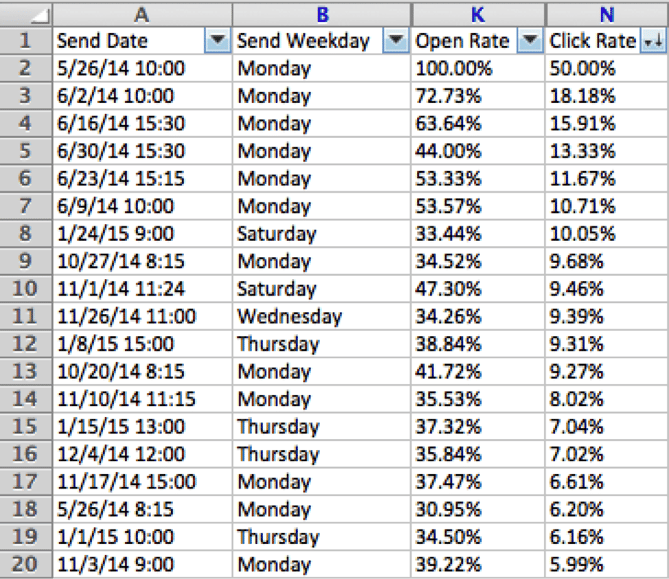
7) Finalize your promotion plan.
Now that you’ve done all of your research, you are ready to finalize your game plan for publishing and promoting your content. You can do this in a simple checklist format or using tools such as Trello to organize all of the steps you plan to take once your post goes live.It’s important to note specific times and deadlines for each stage of your promotion, along with the specific people involved in the promotion, such as your social media manager and email manager. That way, no step in the process is left out.
8) Plan to go "all in" on the day you publish.
The biggest day of promotion is the day that your content goes live. This is the day that your first social media updates will go out, an email about your post is sent to your list, and your outreach emails are sent out.
The first couple of days after your content is
published will be the days you engage with your readers and influencers.
Be prepared to thank people on social media who share your content,
reply to comments on your blog and social networks, and reply to any
email responses you receive from subscribers and influencers. Also be
sure to follow up with any influencers that have not opened or replied
to your outreach.
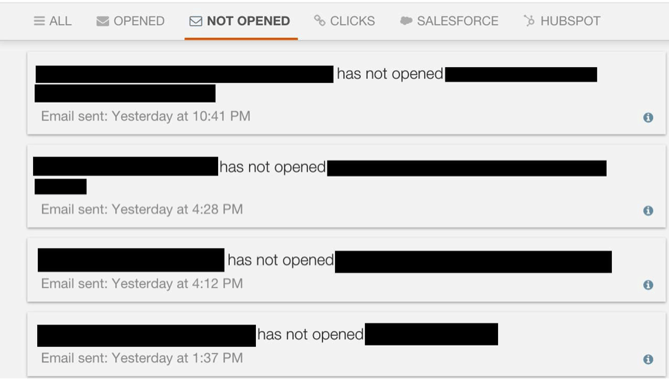
9) Hit the Q&A networks, forums, and communities.
Remember the questions you researched in #2? If you haven’t gone back to answer those, now is the time. Also look for questions that you can answer with your content on other Q&A networks, forums, and communities. Depending on your industry, these can include Quora, Slack, Inbound.org, Growth Hacker, BizSugar, Reddit, and other similar networks.You can also expand community promotion to related groups on Facebook, LinkedIn, and Google+. Most groups have a search feature that allow you to find the right questions to answer -- use those searches to tastefully promote your content.
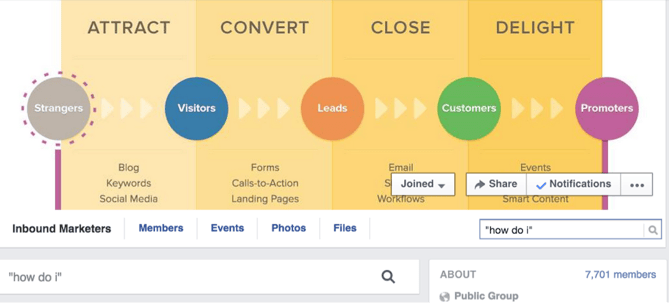
10) Repurpose, reshare, and reintroduce.
Once the initial promotion has ended, it’s time to implement the 3 R’s: repurpose, reshare, and reintroduce. These three tactics will ensure that your content doesn’t just go live on your blog and die, but rather live on in multiple formats across the web.For example, you can turn key points from your content into slides and upload them to SlideShare. You can turn the slides into a slideshow and upload it as a video to YouTube. You can summarize key points and publish it to your LinkedIn profile through LinkedIn Publisher. You can talk through your content and upload it as a podcast. You can syndicate your content on relevant publications (such as Social Media Today for social media topics). The possibilities are endless.
If you follow the 10 techniques outlined in this post, you will be on the way to having content that drives traffic to your website, engagement to your social channels, and leads to your business long after you publish it.
No comments :
Post a Comment